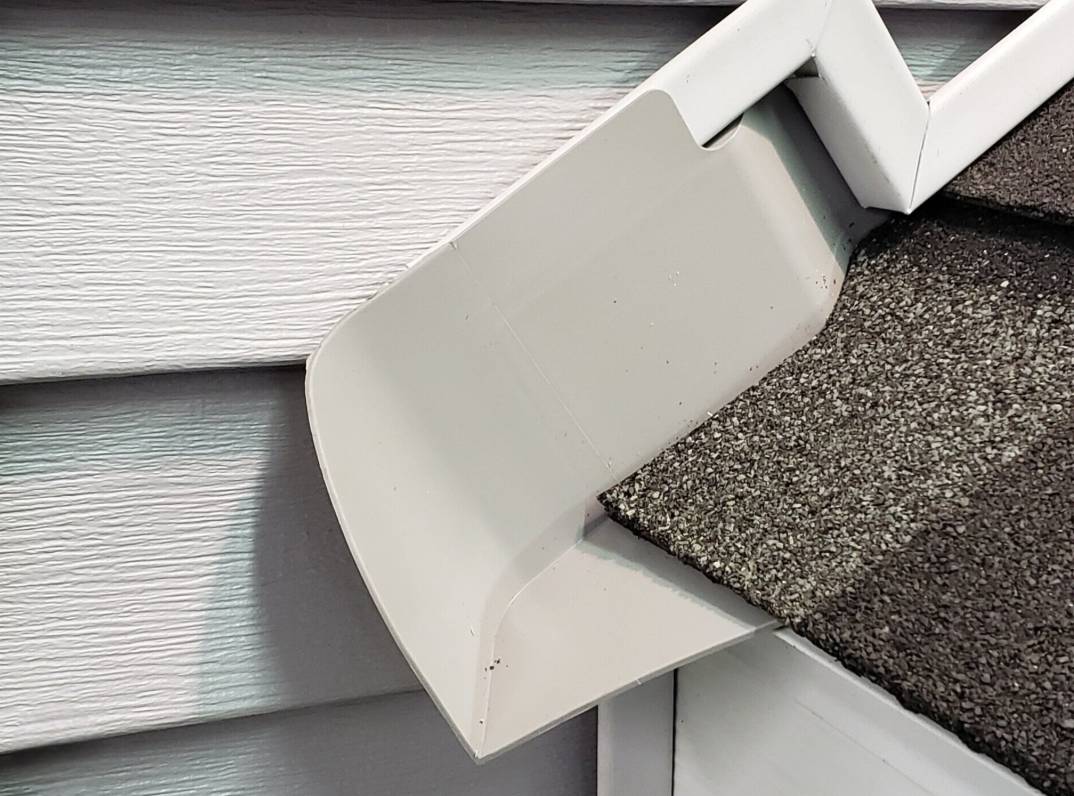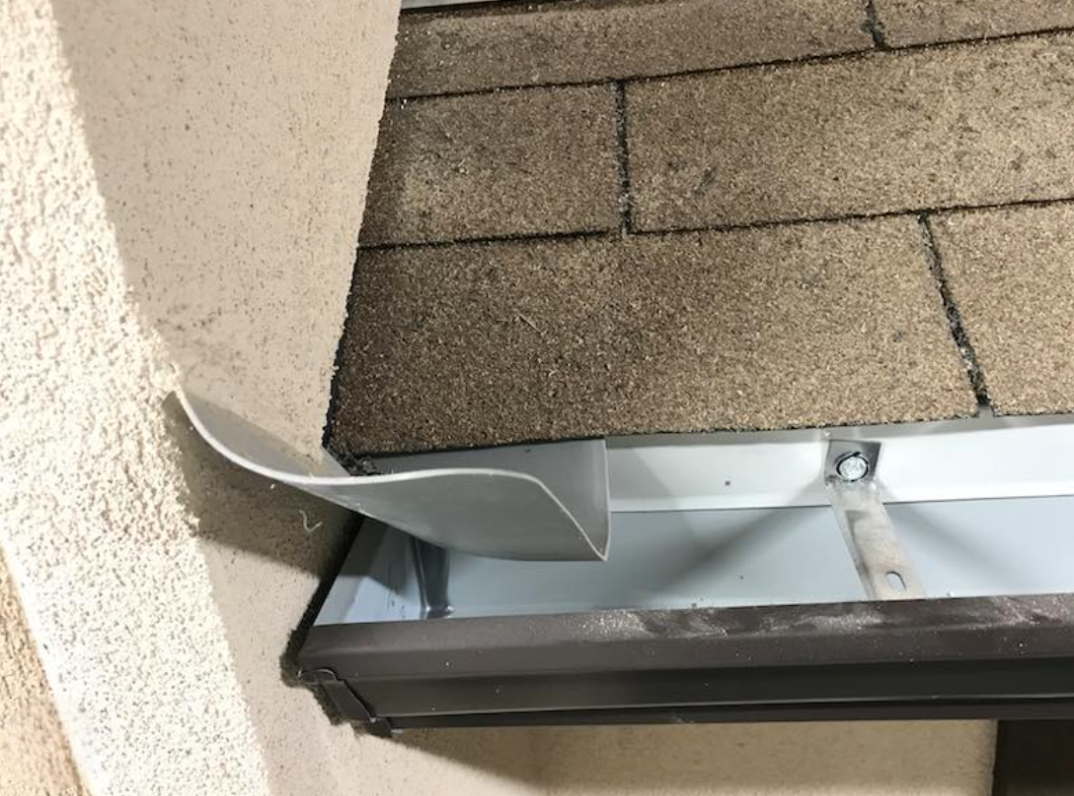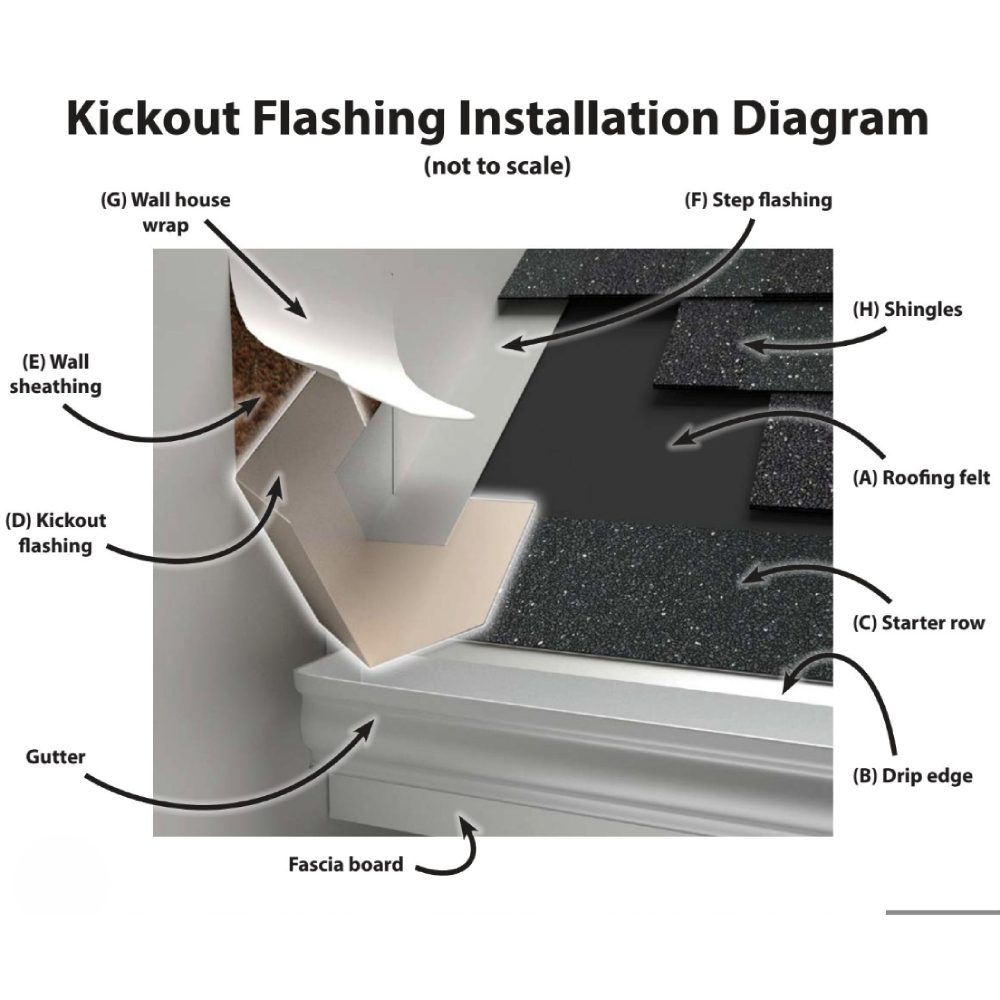When it comes to keeping your home safe from water damage, kickout flashing is one of those small but critical details that often gets overlooked. This simple piece of flashing is installed where the roof meets a vertical wall, and its main job is to redirect water away from areas that are especially vulnerable to leaks. Without it, rainwater can sneak behind siding or stucco, leading to rot, mold, and costly structural damage over time.
Let’s take a closer look at why kickout flashing is so important, how it works, and why it’s required by modern building codes.
How Kickout Flashing Protects Your Home
Whenever water runs down a roof, it tends to collect at the edges—especially where the roofline meets a wall. Without proper diversion, that water can slip into tiny gaps between the roof and wall, eventually finding its way behind siding, windows, or doors.
Kickout flashing solves this by directing roof runoff straight into the gutters instead of allowing it to flow down the siding. This simple redirection prevents water from pooling where it shouldn’t, reducing the risk of rot, mold, and hidden damage behind your exterior walls.

Protecting Siding and Cladding
Even the toughest exterior materials—wood, stucco, or brick—can break down when exposed to trapped moisture. Without kickout flashing, water can collect behind siding, causing it to warp, crack, or rot over time.
You might notice early warning signs like moss or staining on the surface of your siding. But what you can’t see could be worse—hidden damage inside the wall cavity. Left unchecked, this can lead to structural repairs, high maintenance costs, and even foundation problems if the water flows down to the base of the home instead of into the gutter.
Why Building Codes Require It
The importance of kickout flashing isn’t just a best practice—it’s required by building codes. According to the International Residential Code (IRC) Section R903.2.1, any roof-to-wall intersection must include flashing to prevent water from entering the wall assembly. Kickout flashing is specifically mentioned as necessary in areas where water would otherwise drain directly against the wall.
Skipping this step not only risks water damage, but it also means your home isn’t up to code—something that can become an issue during inspections, sales, or insurance claims.
Preventing Mold and Health Risks
Water intrusion doesn’t just damage your home—it can affect your health. Moisture trapped behind walls creates the perfect environment for mold and mildew, which can trigger allergies and respiratory problems. By keeping water out of these hidden areas, kickout flashing helps maintain a dry, healthy living space.

Small Investment, Big Savings
Adding or maintaining kickout flashing is inexpensive compared to the cost of fixing water damage. Repairs for rotted siding, soaked insulation, damaged drywall, or mold remediation can quickly add up. Proper flashing helps you avoid these expenses and keeps your home’s exterior looking great for longer.
Final Thoughts
Kickout flashing may seem like a minor detail, but it’s a vital line of defense against water damage. It directs roof runoff where it belongs—into the gutters—not behind your siding or walls.
If your home is missing this simple but crucial feature, it’s worth addressing as soon as possible. Not only will it protect your investment and keep your home in good shape, but it will also ensure you’re meeting modern building code requirements.
Want peace of mind? Schedule a professional home inspection with Bobcat Home Inspector and make sure details like this aren’t putting your home at risk.

